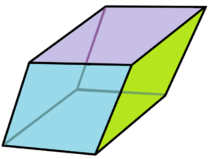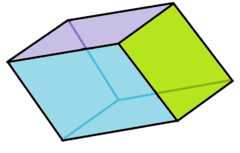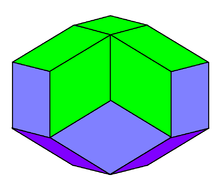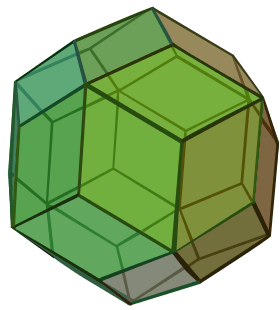Golden rhombus
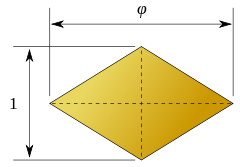
In geometry, a golden rhombus is a rhombus whose diagonals are in the ratio , where is the golden ratio.
Elements
The internal angles of the rhombus are
- degrees
- degrees, which is also the dihedral angle of the dodecahedron
The edge length of the golden rhombus with short diagonal is
A golden rhombus with unit edge length has diagonal lengths
Polyhedra
Several notable polyhedra have golden rhombi as their faces. They include the two golden rhombohedra (with six faces each), the Bilinski dodecahedron (with 12 faces), the rhombic icosahedron (with 20 faces), the rhombic triacontahedron (with 30 faces), and the nonconvex rhombic hexecontahedron (with 60 faces). The first five of these are the only convex polyhedra with golden rhomb faces, but there exist infinitely many nonconvex polyhedra having this shape for all of its faces.[1]
See also
References
- ↑ Grünbaum, Branko (2010), "The Bilinski dodecahedron and assorted parallelohedra, zonohedra, monohedra, isozonohedra, and otherhedra" (PDF), The Mathematical Intelligencer, 32 (4): 5–15, doi:10.1007/s00283-010-9138-7, MR 2747698, archived from the original (PDF) on 2015-04-02 .
- M. Livio, The Golden Ratio: The Story of Phi, the World's Most Astonishing Number, New York: Broadway Books, p. 206, 2002.
